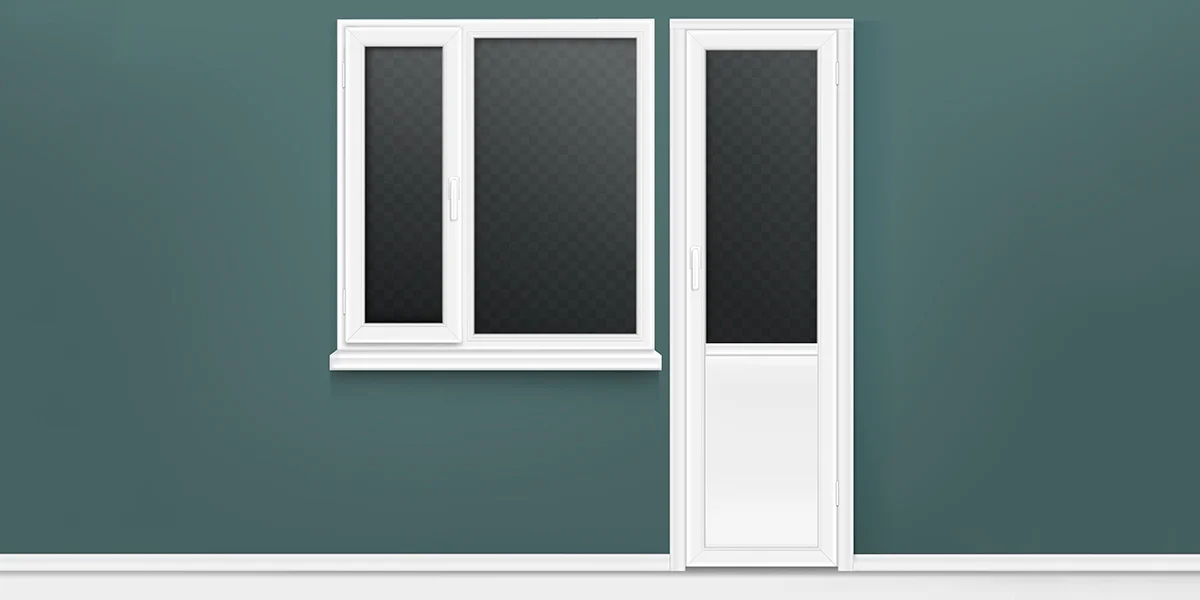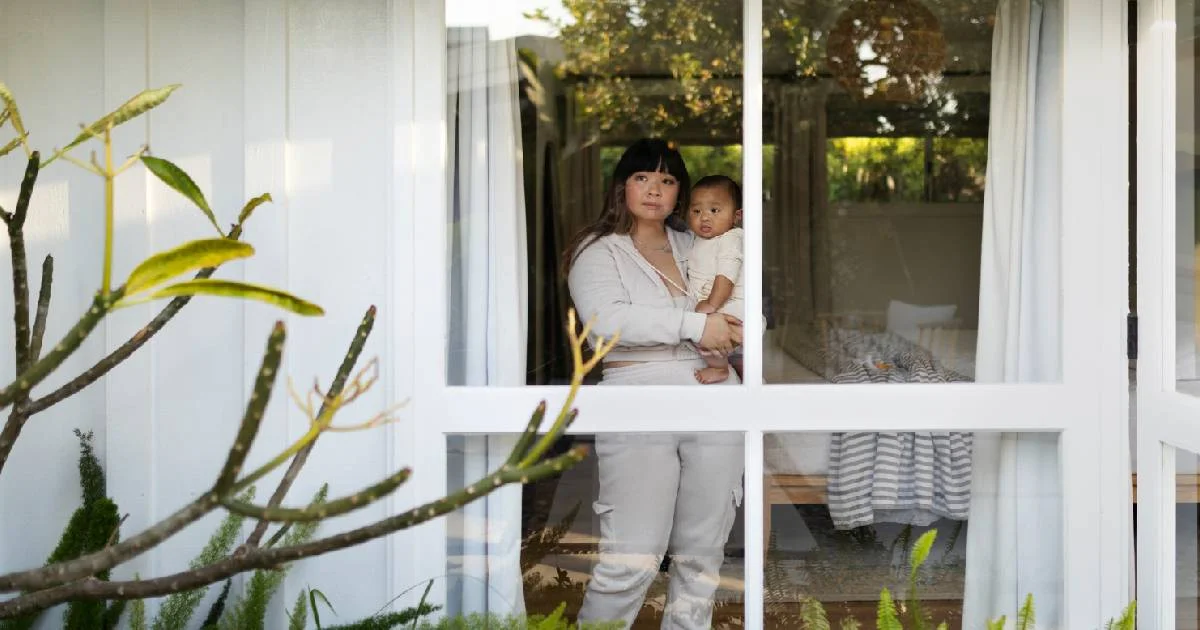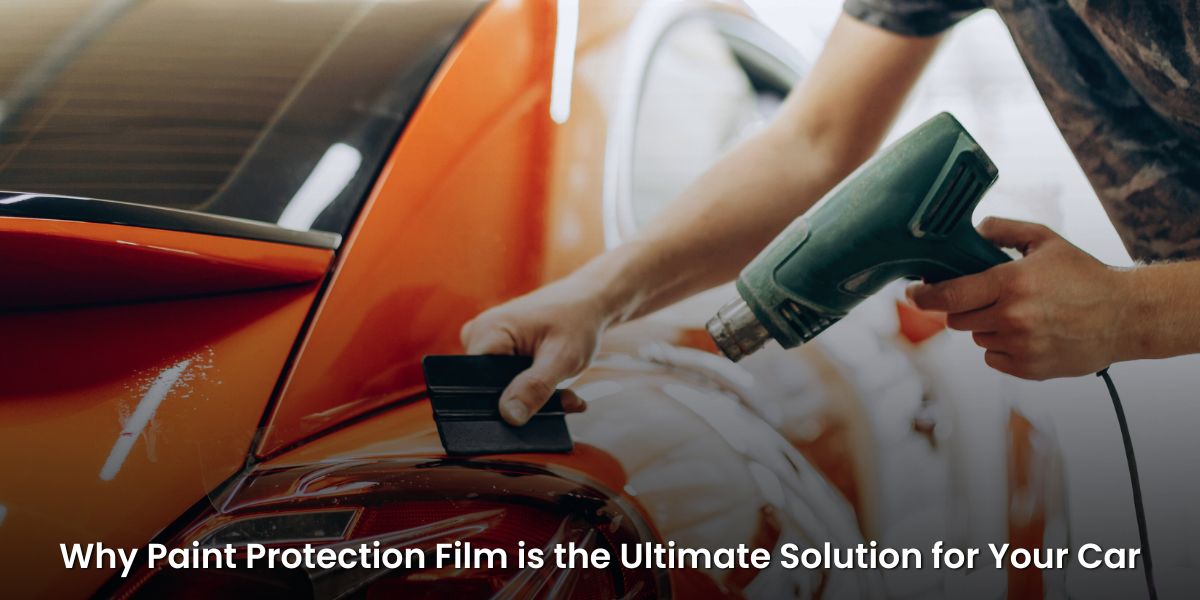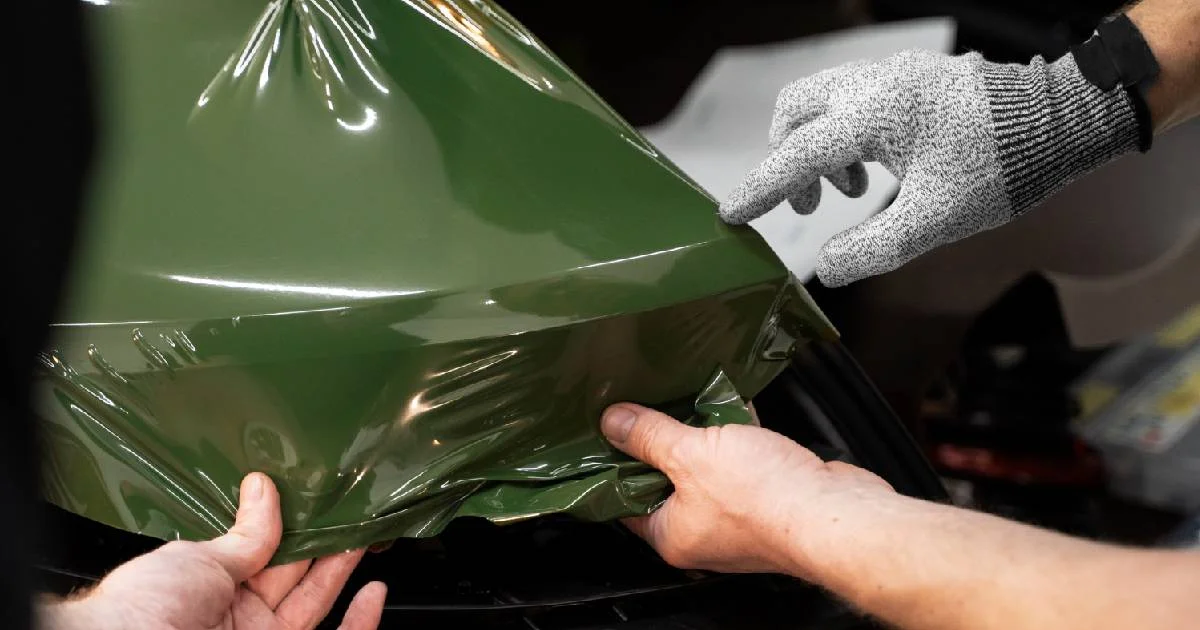
The Pros and Cons of Tinted House Windows
05 Aug 2024, By AdminWhen it comes to enhancing your home's comfort, privacy, and energy efficiency, HOME WINDOW TINTING has become an increasingly popular option. Tinted windows offer a range of benefits, but they also come with some drawbacks. Let's explore the pros and cons of tinting your house windows.
Pros of Home Window Tinting
1. Energy Efficiency
One of the most significant advantages of HOME WINDOW TINTING is improved energy efficiency. Tinted windows can block a substantial amount of solar heat, reducing the need for air conditioning during hot summer months. This can lead to lower energy bills and a reduced carbon footprint.
2. UV Protection
Tinted windows provide excellent protection against harmful UV rays. Prolonged exposure to UV rays can cause furniture, carpets, and other interior items to fade over time. Window tinting helps preserve the vibrancy of your home’s interior by blocking up to 99% of UV radiation.
3. Enhanced Privacy
Privacy is a major concern for many homeowners, and HOME WINDOW TINTING can provide a simple solution. Tinted windows make it more difficult for people to see inside your home, giving you a greater sense of security and privacy without the need for heavy curtains or blinds.
4. Glare Reduction
Excessive glare from the sun can be a nuisance, especially when trying to watch TV or work on a computer. Tinted windows reduce glare, making your living spaces more comfortable and visually appealing.
5. Increased Safety
In the event of an accident or break-in, tinted windows can offer an additional layer of safety. The film used in tinting helps hold the glass together, preventing it from shattering into dangerous shards.
Cons of Home Window Tinting
1. Initial Cost
One of the main drawbacks of HOME WINDOW TINTING is the initial cost. Professional installation can be expensive, depending on the size and number of windows being tinted. However, many homeowners find that the long-term energy savings and other benefits outweigh this initial investment.
2. Potential Aesthetic Changes
While many people appreciate the sleek, modern look of tinted windows, others may find that they darken their home too much or alter the appearance of their exterior in an undesirable way. It's important to choose a tint that complements your home’s style and meets your personal preferences.
3. Reduced Natural Light
While tinted windows are great for reducing glare and blocking UV rays, they can also reduce the amount of natural light that enters your home. This can make your living spaces feel darker, which may not be ideal for everyone.
4. Installation Quality
The effectiveness of HOME WINDOW TINTING largely depends on the quality of the installation. Poorly installed tints can bubble, peel, or become discolored over time. It’s crucial to hire experienced professionals to ensure a smooth and long-lasting finish.
5. Maintenance
Maintaining tinted windows can require special care. Certain cleaning products and methods can damage the tint, so it’s essential to follow the manufacturer’s recommendations for cleaning and maintenance.
Conclusion
HOME WINDOW TINTING offers numerous benefits, from energy efficiency and UV protection to enhanced privacy and safety. However, it’s important to consider the potential downsides, such as the initial cost, aesthetic changes, reduced natural light, and maintenance requirements. By weighing these pros and cons, you can make an informed decision about whether window tinting is the right choice for your home.

What Factors Should You Consider While Choosing Home Window Tinting?
05 Aug 2024, By AdminIn the realm of home improvement, there's a subtler yet incredibly impactful upgrade that often gets overlooked: home window tinting. Window tinting not only adds aesthetic appeal to your residence but also offers a range of practical benefits, from energy efficiency to enhanced privacy. However, choosing the right window tinting for your home involves considering various factors to ensure you make the most suitable choice. Let's delve into what you should ponder when selecting home window tinting.
Purpose and Goals
Before diving into the myriad options available, it's essential to define the purpose and goals you want to achieve with window tinting. Are you primarily concerned with reducing glare? Or perhaps you're looking to enhance privacy without sacrificing natural light? Understanding your objectives will guide you towards the most appropriate tinting solutions for your home.
Types of Window Tints
- Solar Control Films: Designed to reduce heat and glare from sunlight, solar control films can help maintain a comfortable indoor temperature while protecting your furnishings from UV damage.
- Privacy Films: Ideal for areas requiring increased privacy, these films obscure visibility from outside while allowing ample light to enter your home.
- Decorative Films: If you're looking to add a decorative touch to your windows, decorative films offer an array of patterns, textures, and colors to suit your aesthetic preferences.
- Security Films: For enhanced safety and protection, security films strengthen your windows, making them more resistant to break-ins and impacts.
Climate Considerations
The climate in your region plays a significant role in determining the type of window tinting that will best suit your needs. If you reside in a hot and sunny area, prioritizing solar control films can help reduce cooling costs and minimize sun damage to your interiors. Conversely, in colder climates, you might opt for tints that provide insulation to retain warmth during the winter months.
Legal Regulations
Before finalizing your decision on window tinting, it's crucial to familiarize yourself with any local regulations or restrictions pertaining to tint darkness and reflectivity. Failure to comply with these regulations could result in fines or the need to remove non-compliant tints, so be sure to do your research beforehand.
Quality and Warranty
Investing in high-quality window tinting ensures durability and long-term performance. Look for reputable brands that offer warranties, providing you with peace of mind and protection against potential defects or issues.
Professional Installation
While DIY window tinting kits are available, opting for professional installation is often the preferred choice to ensure proper application and optimal results. Experienced installers have the expertise and tools to achieve a flawless finish while minimizing the risk of bubbling, creasing, or improper alignment.
Budget Consideration
Lastly, consider your budget when selecting home window tinting. While premium options may offer additional features and benefits, there are also more budget-friendly alternatives that provide satisfactory results without breaking the bank. Determine your priorities and allocate your budget accordingly to find the best balance between cost and quality.
In conclusion, home window tinting is a valuable investment that offers both aesthetic enhancement and practical advantages. By carefully considering factors such as your objectives, climate, type of tint, and budget, you can select the most suitable tinting solution to meet your needs. Whether you're aiming to improve energy efficiency, increase privacy, or add a decorative element to your home, the right window tinting can transform your living space for the better.
Book Now

Why Paint Protection Film is the Ultimate Solution for Your Car
05 Aug 2024, By AdminOwning a car is a significant investment, and maintaining its pristine condition is a priority for many car enthusiasts. With various options available for car paint protection, choosing the right one can be challenging. Among these options, Paint Protection Film (PPF) stands out as the best choice. Here’s why Paint Protection Film is the ultimate solution for car paint protection.
- 1.Superior Protection Against Physical Damage:
Paint Protection Film offers unmatched protection against physical damage. It acts as a robust shield against minor abrasions, stone chips, scratches, and other debris that can cause unsightly damage to your car’s paintwork. The film’s durable and flexible nature ensures that the underlying paint remains untouched, preserving the car’s appearance and value. - 2.UV Protection:
Prolonged exposure to ultraviolet (UV) rays can cause your car’s paint to fade and oxidize over time. Paint Protection Film provides an effective barrier against harmful UV rays, preserving the vibrant color and glossy finish of your vehicle. This UV resistance ensures that your car looks newer for longer, even when exposed to harsh sunlight. - 3.Chemical Resistance:
Paint Protection Film is designed to resist a wide range of chemicals that can harm your car’s paint. From bird droppings and bug splatter to acid rain and tree sap, PPF prevents these substances from coming into direct contact with the paint, reducing the risk of staining and etching. This chemical resistance makes it easier to clean your car and maintain its flawless appearance. - 4.Preservation of Original Paint:
Unlike traditional paint protection methods that involve applying additional layers of paint or coatings, the Paint Protection Film preserves the original paint of your car. This is particularly important for vintage or high-end vehicles where maintaining the factory paintwork is crucial for their value. PPF ensures that the original paint remains untouched and in mint condition. - 5.Clear and Invisible Protection:
One of the biggest advantages of Paint Protection Film is its clarity. When applied correctly, PPF is virtually invisible, allowing the original color and finish of your car to shine through without any distortion. This means you can enjoy the benefits of superior protection without compromising on the aesthetic appeal of your vehicle. - 6.Long-Lasting Durability:
Paint Protection Film is designed to last for several years, offering long-term protection for your car. High-quality PPF can endure the rigors of daily driving, harsh weather conditions, and regular washing without deteriorating. This longevity means fewer reapplications and lower maintenance costs over the lifetime of your vehicle. - 7.Ease of Maintenance:
Maintaining a car with Paint Protection Film is straightforward. The film’s smooth surface repels dirt, dust, and grime, making it easier to clean. Regular washing and occasional waxing are usually enough to keep the film and the underlying paint in excellent condition. This ease of maintenance saves time and effort, allowing you to enjoy your car more and worry less about its upkeep. - 8.Customizable and Versatile Application:
Paint Protection Film can be applied to various parts of your vehicle, from the hood and fenders to the mirrors and bumpers. It can be customized to cover specific areas prone to damage or applied to the entire vehicle for comprehensive protection. This versatility ensures that you can tailor the level of protection to suit your needs and preferences. - 9.Enhanced Resale Value:
Finally, using Paint Protection Film can enhance the resale value of your car. A well-maintained exterior free from chips, scratches, and stains is more attractive to potential buyers. The presence of PPF indicates that you have taken diligent care of your vehicle, which can justify a higher asking price and facilitate a quicker sale.
Conclusion
In summary, Paint Protection Film offers an array of benefits that make it the best choice for car paint protection. Its superior defense against physical and chemical damage, self-healing properties, UV protection, and long-lasting durability ensure that your car remains in pristine condition. With its clear and invisible application, ease of maintenance, and customizable coverage, PPF stands out as the ultimate solution for preserving the beauty and value of your vehicle. Investing in Paint Protection Film is a smart decision for any car owner who wants to keep their car looking new for years to come.

What is the cost of wrapping a car?
05 Aug 2024, By AdminWhat is the Cost of Wrapping a Car?
Car wrapping has become an increasingly popular way for vehicle owners to change the appearance of their cars without the permanence of a paint job. But what exactly goes into the cost of car wrapping? In this blog, we'll dive into the factors that influence the price of car wrapping, helping you understand what to expect if you decide to give your car a fresh new look.
Understanding Car Wrapping
Car wrapping involves applying a vinyl film over the surface of your vehicle. This process allows for a variety of finishes, including matte, gloss, satin, and even custom designs. Unlike traditional paint, a car wrap can be removed without damaging the original paint, making it a versatile and reversible modification.
Factors Affecting the Cost of Car Wrapping
The cost of car wrapping can vary significantly based on several factors. Here are the key elements that influence the overall price:
- Vehicle Size and Type
The size and type of your vehicle are primary determinants of the wrapping cost. Wrapping a small sedan is generally less expensive than wrapping a larger SUV or a luxury sports car. This is because larger vehicles require more vinyl material and more labor hours to cover all the surfaces properly. - Vinyl Quality and Finish
The quality of the vinyl and the type of finish you choose play a significant role in the cost. High-quality vinyl from reputable brands such as 3M or Avery Dennison can cost more but offers better durability and appearance. The finish also impacts the price; specialty finishes like matte, chrome, or carbon fiber tend to be more expensive than standard gloss or satin finishes. - Design Complexity
If you opt for a custom design or a wrap with intricate patterns and graphics, the cost will increase. Custom designs require additional time for design, printing, and installation. Simple, single-color wraps are typically more affordable. - Installation Labor
Labor costs vary based on the installer’s expertise and location. Professional installers with a proven track record may charge more for their services, but they also ensure a higher-quality finish. In metropolitan areas or places with a high cost of living, labor rates may be higher compared to rural areas. - Surface Preparation
Before applying the vinyl wrap, the car's surface must be thoroughly cleaned and prepped. If your vehicle has scratches, dents, or other imperfections, these need to be addressed, which can add to the overall cost. Some shops include minor prep work in their pricing, while others may charge extra. - Additional Features
Additional features such as wrapping door jambs, interior trims, or wheels can also increase the cost. These are often considered add-ons and are priced separately.
Average Cost Breakdown
To give you a general idea, here’s a rough estimate of car wrapping costs based on vehicle size and type:
- Compact Car (e.g., Honda Civic, Ford Focus): $1,500 - $3,000
- Mid-Size Sedan (e.g., Toyota Camry, BMW 3 Series): $2,000 - $4,000
- SUV/Truck (e.g., Ford Explorer, Chevrolet Tahoe): $3,000 - $5,000
- Luxury/Sports Car (e.g., Porsche 911, Tesla Model S): $4,000 - $10,000
These prices can vary depending on the factors mentioned earlier.
Is Car Wrapping Worth the Cost?
Car wrapping offers several advantages that can justify the cost:
- Customization: You can achieve a unique look that stands out.
- Protection: Vinyl wraps protect the original paint from minor scratches and UV damage.
- Reversibility: If you want to revert to your car's original color or change the design, you can simply remove the wrap.
- Resale Value: Preserving the original paint can help maintain the vehicle’s resale value.
Conclusion
Car wrapping can be a worthwhile investment for those looking to personalize their vehicle or protect its paint. The cost of car wrapping varies based on factors such as vehicle size, vinyl quality, design complexity, labor, surface preparation, and additional features. By understanding these factors, you can make an informed decision and choose a car wrapping service that fits your budget and needs. Whether you’re looking for a bold new look or subtle sophistication, car wrapping offers endless possibilities to transform your vehicle’s appearance.
